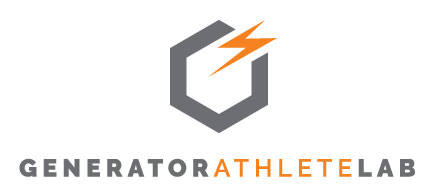Red Light Therapy: Benefits and Protocols
Red light therapy (RLT) has gained popularity in recent years for its potential health benefits and therapeutic applications. This non-invasive treatment uses specific wavelengths of light, typically in the red (620-750 nm) and near-infrared (750-1100 nm) spectrum, to promote healing, reduce inflammation, and improve skin health. As research continues to emerge, understanding the benefits and protocols for red light therapy becomes increasingly important.
Benefits of Red Light Therapy
Skin Health and Anti-Aging: One of the most widely recognized benefits of RLT is its ability to improve skin texture and reduce signs of aging. Studies have shown that RLT can stimulate collagen production, leading to improved skin elasticity and reduced wrinkles (T. H. Hamblin, 2017). Furthermore, it may help reduce acne and rosacea by decreasing inflammation and promoting healing of the skin.
Wound Healing: Red light therapy has been shown to enhance the body’s natural healing processes. Research indicates that RLT can accelerate wound healing by increasing cellular proliferation and migration, particularly in skin injuries and surgical wounds (M. A. Barolet, 2008). This makes it a promising option for patients recovering from surgery or injury.
Pain Relief and Muscle Recovery: Athletes and fitness enthusiasts have turned to RLT for its potential to reduce muscle soreness and speed up recovery after intense workouts. A meta-analysis found that RLT can significantly reduce pain in conditions like arthritis, tendonitis, and sports injuries (M. M. J. Leal et al., 2016). The therapy is believed to improve blood flow and reduce inflammation, aiding in faster recovery.
Mood Enhancement: Emerging research suggests that RLT may have positive effects on mood and mental health. Light therapy has been traditionally used to treat seasonal affective disorder (SAD), and some studies indicate that red light can improve mood and cognitive function, potentially benefiting individuals dealing with depression or anxiety (K. K. H. Wong et al., 2021).
Hair Growth Stimulation: RLT has shown promise in stimulating hair growth for individuals experiencing androgenetic alopecia (male or female pattern baldness). Studies indicate that red light can promote cellular metabolism in hair follicles, increasing hair density and thickness (A. A. Lee et al., 2013).
Protocols for Red Light Therapy
To maximize the benefits of red light therapy, following specific protocols is essential. Here are some general guidelines:
Frequency and Duration: Most studies suggest using RLT 3-5 times per week. Each session can last between 10-20 minutes, depending on the area being treated and the device used. It’s crucial to follow the manufacturer’s instructions for specific devices.
Distance from the Light Source: The effectiveness of RLT is influenced by the distance between the light source and the skin. Typically, maintaining a distance of 6-12 inches is recommended, but this can vary depending on the device’s power output. Closer proximity often yields better results.
Skin Preparation: For optimal absorption, it’s beneficial to ensure the skin is clean and free from lotions or oils before treatment. If using RLT for skin conditions, consistent use as part of a skincare routine can enhance results.
Combining with Other Treatments: RLT can be effectively combined with other therapeutic modalities. For example, using RLT alongside physical therapy for injury rehabilitation may improve overall outcomes.
Consultation with Healthcare Professionals: Before starting any new therapy, it’s advisable to consult with a healthcare provider, particularly for individuals with underlying health conditions or those taking medications that may cause photosensitivity.
Conclusion
Red light therapy is a promising treatment option with a wide range of benefits, from enhancing skin health to reducing pain and promoting healing. As research continues to evolve, the understanding of optimal protocols will help maximize its efficacy. As with any therapy, individual results may vary, and consulting with a healthcare professional can help tailor the approach to personal needs.
Featured in Austin Fit Magazine
This article is also featured in the October 2024 Edition of Austin Fit Magazine
References
Hamblin, M. (2017). “Mechanisms of low-level light therapy.” Journal of Biophotonics, 10(9), 1203-1210.
Barolet, M. A. (2008). “Light-emitting diodes (LEDs) in dermatology: a review.” Journal of Cosmetic and Laser Therapy, 10(3), 159-167.
Leal, M. M. J., et al. (2016). “Efficacy of low-level laser therapy in the treatment of chronic pain: a systematic review and meta-analysis.” Physiotherapy Theory and Practice, 32(1), 15-24.
Wong, K. K. H., et al. (2021). “Effects of photobiomodulation on mood and cognitive performance: a systematic review.” Journal of Photochemistry and Photobiology B: Biology, 223, 112320.
Lee, A. A., et al. (2013). “A prospective, randomized, double-blind, sham-controlled clinical trial of low-level laser therapy for the treatment of androgenetic alopecia.” Lasers in Surgery and Medicine, 45(3), 192-198.
